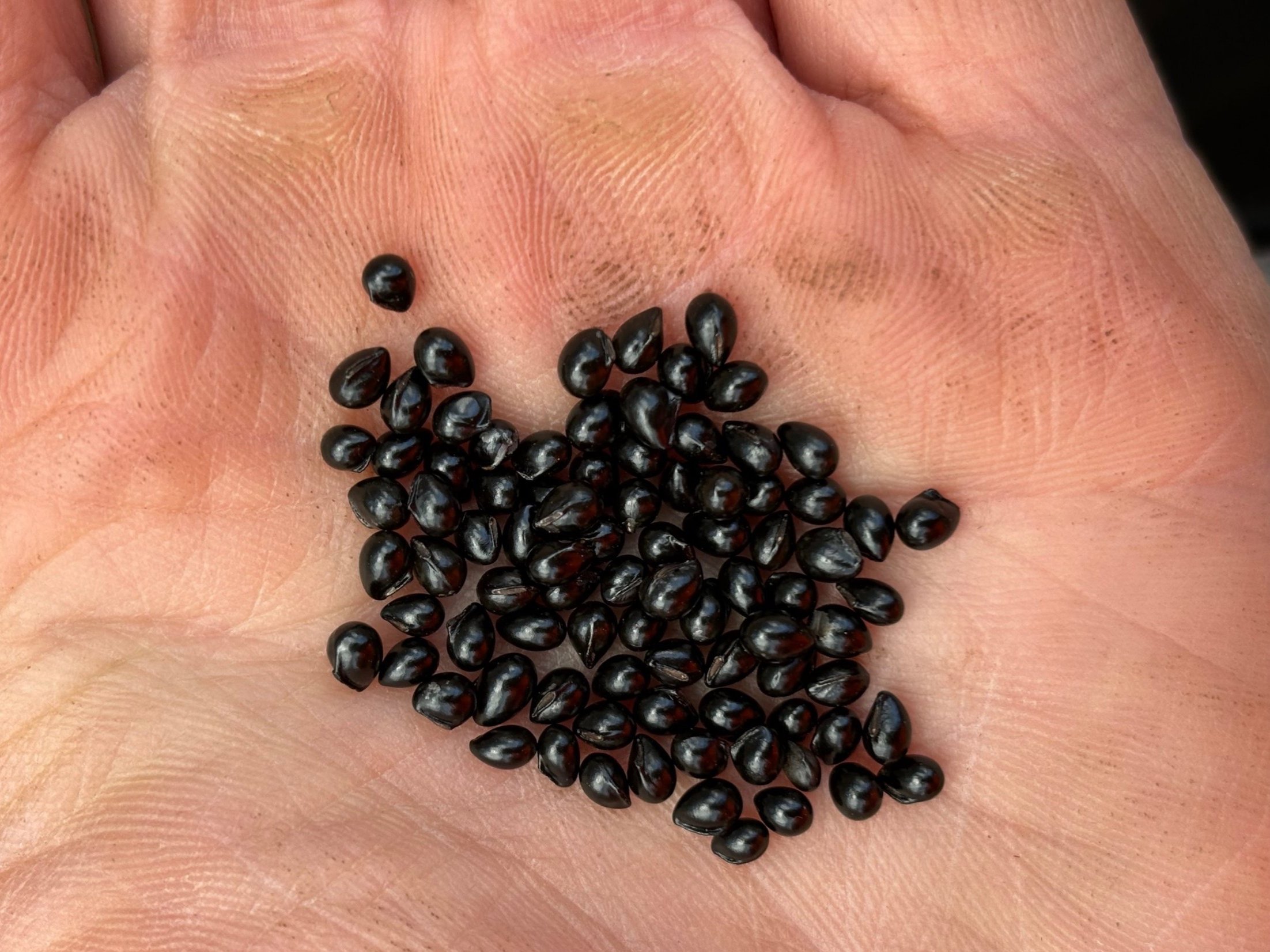
Seed Collection Guidelines
These seed collection guidelines are general and should be followed alongside species-specific best practices for sustainable seed collection.
First confirm the quantity and quality of plants is appropriate for sustainable collection: count the number of plants in a population and survey individuals with sufficiently ripe seed.
Collect no more than 20% of available and ripe seeds from as many plants as possible of different sizes to represent variety within the population, ideally from more than 50 individuals, counting as you collect.
Only collect seed, no other plant parts, to put in envelopes. Keeping collections clean of other plant parts helps keep seed viable. Remove any insects during and after collection!!
Seeds generally turn from green or white when unripe to brown when ripe, but the color of ripe seed varies widely between species. Research specific species in advance and bring a field guide and resources with you.
Seed is often ripe when it is being dispersed by the plant. Some seed capsules split or open when ripe, and some will be mature before the capsule is split. If you shake a seed head and seeds fall out, or seeds come off easily when gently pulled or rubbed, the seed is probably ripe.
For plants with fleshy fruits, the fruits should feel a bit soft when squeezed or should fall off with a gentle pull.
Test the hardness of the seed coat by cutting with your fingernail or a knife. For larger seeds, viable and ripe seed will have an embryo that is filled, firm, and white.
If only a fraction of seed is ripe with some still ripening, you may need to return to collect seed over multiple days or weeks. Note that ripening times fluctuate from season to season with changing weather patterns and your local climate. Guidelines and field guides as to when to collect from a given species may not be accurate for the year or your location.
Collect seed in dry conditions, when plants are not damp with rain or morning dew.
Store seeds in envelopes (tape corners for small seed to prevent spilling out). For fleshy fruits, store seeds in plastic bags. Place envelopes or bags in a cool, dry place after collection. Any seeds stored in plastic bags should be refrigerated.
While in the field, take photos of the population and the site, record GPS location information, and keep records of any other notable features of the population.
Fill out the NFFC Seed Collection Information Slip and mail seeds no more than two days after collection occurs.
These guidelines are adapted from Native Plant Trust’s Northeast Seed Network and their volunteer guide to wild collection of common species, created in 2021 by Nasami Farm Intern Emily Hitchcock.
Other Sources:
Seeds and Fruits of Plants of Eastern Canada and the Northeastern United States, Montgomery, F. H., 1977, University of Toronto Press, Toronto.
Growing and Propagating Wildflowers of the United States and Canada. Cullina, W., 2000, The New England Wildflower Society
Native Trees, Shrubs, and Vines: A guide to using, growing and propagating North American woody plants. Cullina, W., 2002, The New England Wildflower Society
